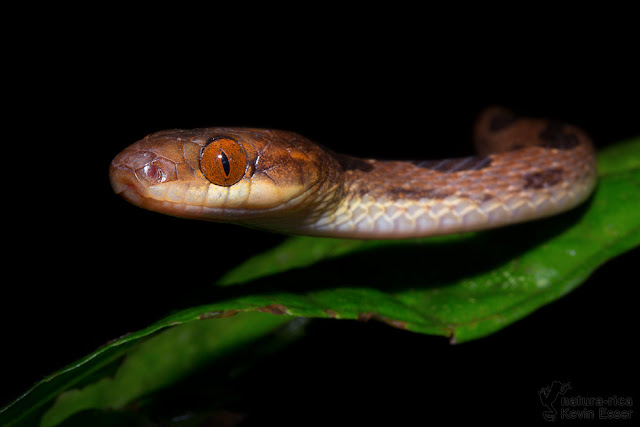One of the typical "must see" destinations in Costa Rica is the famous Arenal Volcano.
Not only because of the perfectly shaped volcano, but also because of the biodiversity, the national park is worth the trip. You can comfortable drive (4x4 recommended) to a viewpoint to admire the volcano. Hopefully clouds do not block the view. So you do not have to be in a good physical condition to see the volcano, you only need luck with the weather. Of course there are very nice hiking trails as well.
At the viewpoint this pretty bird welcomed us. A White-throated Magpie-jay (Calocitta formosa)
Here you can see the map (I colored the yellow and green trails). At the end of the main road (red X) is the viewpoint. There is a small trail on the left, connecting the two parking lots. The yellow trail is pretty sunny and partly surrounded by bamboo forest. It ends at another, more adventurous viewpoint. From there you can see the volcano and the lake. The green trail winds through secondary rainforest and is mostly shady.
I found this Eyelash Viper (Bothriechis schlegelli) quite at the beginning of the yellow trail. What a start - amazing! Some Howler Monkeys jumped around in the bushes, but I didn't get any pictures of them.
The Central American Whiptail (Ameiva festiva) is common in the national park. The juveniles can be recognized by their blue tail.
Barred Forest Racer (Dendrophidion vinitor), found somewhere on the "green trail".
Another great find on the green trail was this beauty: Parrot Snake (Leptophis ahaetulla).
The animals surely don't stay in the boundaries of the national park, so in the area around La Fortuna we were able to observe some cool stuff. The advantage outside the np is the opportunity to look in the dark for animals... perfect to find some of the numerous nocturnal species.
The Northern Cat-eyed Snake (Leptodeira septentrionalis) is very common. It was the first snake we found at night. They mainly feed on frogs and their eggs.
This handsome Hourglass Treefrog (Dendropsophus ebraccatus) is calling for love...
...while this one already found a female for breeding. To me, the Hourglass Treefrog is one of the prettiest frog species in Costa Rica. A nice looking Tropical Orb Weaver (Eriophora fuliginea) built it's web next to the trail. The orange coloration of their underside is amazing, still I wanted to get a glance at it's back. Therfore I had to crawl underneath the web. I am not really afraid of spiders, but doing this (in the dark!) was somehow quite thrilling.
The Warszewitsch's Frog (Lithobates warszewitschii) is well camouflaged. He fits perfect with the leaf litter.
To show it's beauty and the pointy snout, here is another specimen. The name is kind of hard to pronounce and I assume I mess it up pretty bad, but I really like this frog.
The "Cutie-Award" goes to this juvenile Blunthead Tree Snake (Imantodes cenchoa).
Last but not least, a beautiful Leaf Litter Toad (Rhaebo haematiticus)
This handsome Hourglass Treefrog (Dendropsophus ebraccatus) is calling for love...
...while this one already found a female for breeding. To me, the Hourglass Treefrog is one of the prettiest frog species in Costa Rica. A nice looking Tropical Orb Weaver (Eriophora fuliginea) built it's web next to the trail. The orange coloration of their underside is amazing, still I wanted to get a glance at it's back. Therfore I had to crawl underneath the web. I am not really afraid of spiders, but doing this (in the dark!) was somehow quite thrilling.
The Warszewitsch's Frog (Lithobates warszewitschii) is well camouflaged. He fits perfect with the leaf litter.
To show it's beauty and the pointy snout, here is another specimen. The name is kind of hard to pronounce and I assume I mess it up pretty bad, but I really like this frog.
The "Cutie-Award" goes to this juvenile Blunthead Tree Snake (Imantodes cenchoa).
Last but not least, a beautiful Leaf Litter Toad (Rhaebo haematiticus)
























